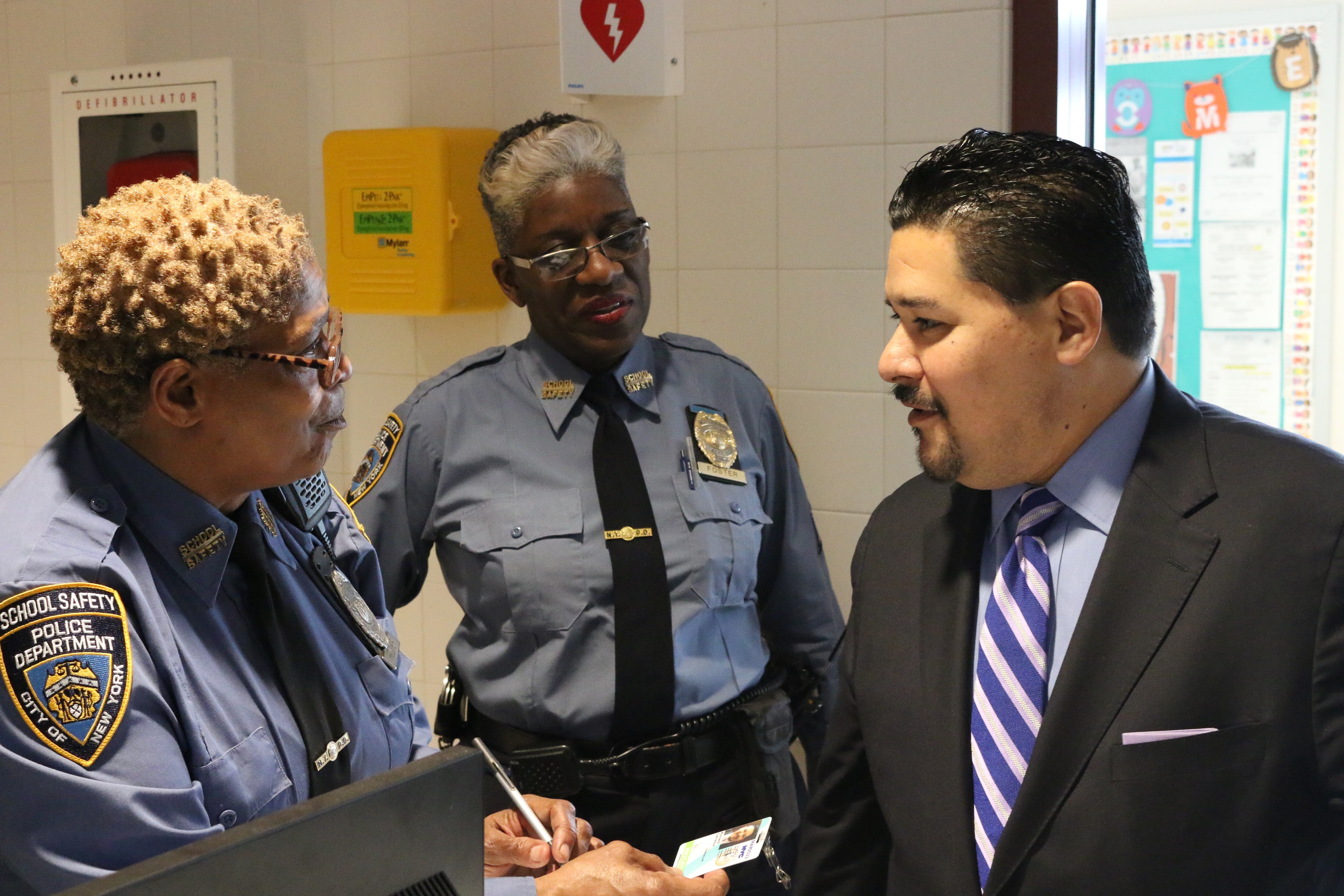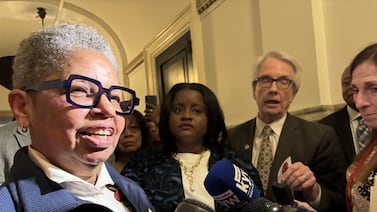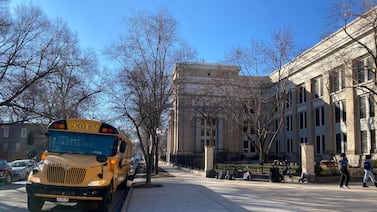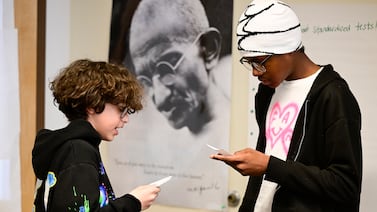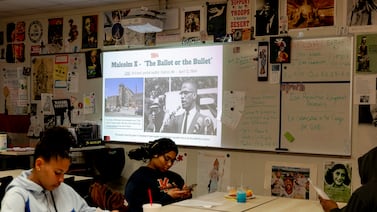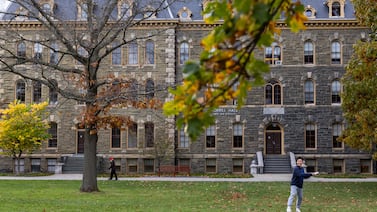Even as the coronavirus has created a slew of rules students will be expected to follow — from social distancing to wearing masks every day — New York City officials are instructing principals to use last year’s discipline policies.
As schools prepare to open their doors to students next week, the city’s discipline guidance does not explain how administrators should enforce health and safety standards, according to a memo obtained by Chalkbeat.
“They haven’t even bothered to update it — everything is from 2019,” said a Bronx high school principal who spoke on condition of anonymity because they were not authorized to speak publicly. “It will literally endanger people’s health.”
One of the key questions, multiple principals said, is how they are supposed to enforce the mandate that all students wear masks throughout the school day. Schools Chancellor Richard Carranza declared last month that students who refuse to wear masks would be barred from in-person learning, but it’s unclear if or where that policy is spelled out and it was not included in a recent letter to families about school discipline.
Districts across the country are grappling with how to update their school discipline policies to reflect the coronavirus era — with some ratcheting up punishments for health-related infractions. In New York City, one of the only large urban school systems attempting to return to in-person learning this September, the challenge is particularly complex as teachers will be working with students in two separate learning environments: at home and in school buildings.
In New York, officials are instructing schools to deploy traditional discipline policies regardless of where students are, allowing schools to suspend students whether they are taking classes in person or remotely.
Students who are suspended for up to five days can be removed from their virtual or in-person classrooms, but teachers at their school must provide them with “substantially equivalent” classroom work during that time. As in previous years, students suspended for more than five days may be sent to suspension centers scattered throughout the city and staffed by a different set of educators. Amid COVID-19, that policy raises questions about the health impacts of mixing students from different school communities.
The guidance includes little detail about how suspensions should work in practice. If a student speaks out during a Zoom lesson, could they be barred from returning to class the next day? When two students have a minor scuffle in a hallway or spit on the ground, could they be temporarily banned from in-person instruction because of the health risks? As teachers are stretched between virtual and in-person learning, who will be tasked with ensuring suspended students receive their schoolwork?
Johanna Miller, director of the New York Civil Liberties Union’s education policy center, said she found the guidance puzzling and wondered why a student would need to be cut off from their school community for lengthier suspensions, rather than just be required to work from home.
“The idea that they couldn’t then work remotely from their home just shows that your access to education being taken away from you is the punishment,” she said. “Surviving coronavirus requires community, and resorting to punishments that break the bonds of community are never going to get us there.”
Advocates worry that the lack of clear guidance could also undermine the city’s efforts to train teachers in trauma-informed practices and make schools welcoming when students return. They fear that without clear guardrails, schools may wind up suspending students who are acting out in part because of trauma associated with the pandemic, which has hit communities of color hardest.
“We certainly don’t think it’s in the best interests of students right now to face further systems of exclusion when they have experienced collective trauma both with COVID-19 but also the fight for racial justice,” said Nelson Mar, an education attorney at Bronx Legal Services, a public interest organization. He added that Black students and those with disabilities are already more likely than their peers to be suspended.
Mar and other advocates and lawmakers have called for a statewide moratorium on suspensions, arguing that it is unfair to remove students from classes in the middle of a health crisis that has already caused students to miss out on instruction. New York City leaders have largely embraced policies designed to curtail suspensions, which have fallen significantly under Mayor Bill de Blasio, though some educators have said that has made classrooms more chaotic.
Carranza has indicated that he is not interested in harsh approaches to health violations. “There’ll be a lot of restorative ways of helping students to understand why it’s important to wear the mask,” Carranza said in July. “So it’ll be redirection, it’ll be education. We are not talking about punishing kids.”
But not long after, he said that students who don’t wear masks should be forced to learn from home. An education department spokesperson, Nathaniel Styer, emphasized that sending a student home for refusing to wear a mask should not be considered a disciplinary measure and should happen after a discussion with the student’s parents. He said students should only be barred from in-person learning if they continually flout the mask requirement or have coronavirus symptoms, such as a fever.
Some school leaders said it is essential for the city to provide clarity on how to enforce health rules, even without resorting to severe punishments.
A second Bronx principal, who also spoke on condition of anonymity because they were not authorized to speak publicly, said it could be impossible to run in-person classes if staff and students see that there aren’t consequences for violating health rules.
“A lot of students need a lot of support and in-person support is the best thing and restorative practice is the best thing,” the principal said, referring to interventions such as peer mediation. But “if you can’t provide safety, there is no instruction that will happen.”


